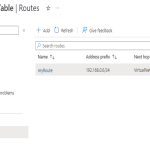Choosing between Amazon Route 53 and GoDaddy DNS depends heavily on your website's complexity, technical requirements, and budget. Both services handle domain name system (DNS) translation, but they cater to significantly different audiences.
Core Differences
GoDaddy DNS is fundamentally a bundled service provided alongside domain registration and basic hosting packages. Route 53, however, is a standalone, enterprise-grade DNS web service deeply integrated into the broader Amazon Web Services (AWS) ecosystem, designed for complex infrastructure needs.
Key Feature Comparison
- Domain Registration: GoDaddy is primarily a domain registrar and includes DNS with registration. Route 53 also offers domain registration, but its core strength is DNS management.
- Performance & Reliability: Route 53 leverages AWS's globally distributed network of nameservers using techniques like Anycast routing to answer queries from the nearest location, offering superior speed and resilience. GoDaddy DNS uses standard nameservers, which are generally reliable but lack the global optimization and potential single-digit millisecond response times of Route 53.
- Scalability & Traffic Management: Route 53 excels in advanced routing. It supports sophisticated policies like geolocation routing, latency-based routing, weighted round robin, and failover (Active-Active and Active-Passive), crucial for complex applications and high-availability setups. GoDaddy DNS offers basic failover options but lacks the granular routing controls.
- Integration: Route 53 provides deep, seamless integration with other AWS services (EC2, S3, CloudFront, ELB, etc.), enabling automated configurations and health checks tied to infrastructure events. GoDaddy DNS integration focuses mainly on its own hosting and email products.
- Health Checks: Route 53 includes robust monitoring capabilities. You can configure health checks to monitor endpoints and automatically reroute traffic away from unhealthy resources. GoDaddy DNS health checks are much more basic.
- DNSSEC: Both services offer DNSSEC (Domain Name System Security Extensions) support, though configuration might be more straightforward within Route 53's management console.
- Ease of Use: GoDaddy DNS typically features a simpler, more user-friendly interface suited for beginners managing one or a few domains. Route 53's interface is more powerful but reflects the complexity of AWS, presenting a steeper learning curve for non-technical users.
- Pricing: GoDaddy DNS is usually free or very low-cost as part of domain registration/bundled hosting. Route 53 charges per hosted zone per month and per million queries, costing more for high-traffic sites but offering industrial-grade features.
Which Should You Choose?
- Choose GoDaddy DNS If: You have a simple website, blog, or small business site; you registered your domain with GoDaddy and use their hosting; you prefer an easy-to-use interface and minimal setup; cost is a primary concern. It's perfectly adequate for straightforward needs.
- Choose Amazon Route 53 If: You run complex, high-traffic applications or websites; require maximum uptime and global performance; use other AWS services extensively; need advanced traffic routing (geo, latency, failover); need granular health monitoring tied to DNS responses; or require enterprise-level scalability and reliability. The power and integration justify the potential higher cost.











